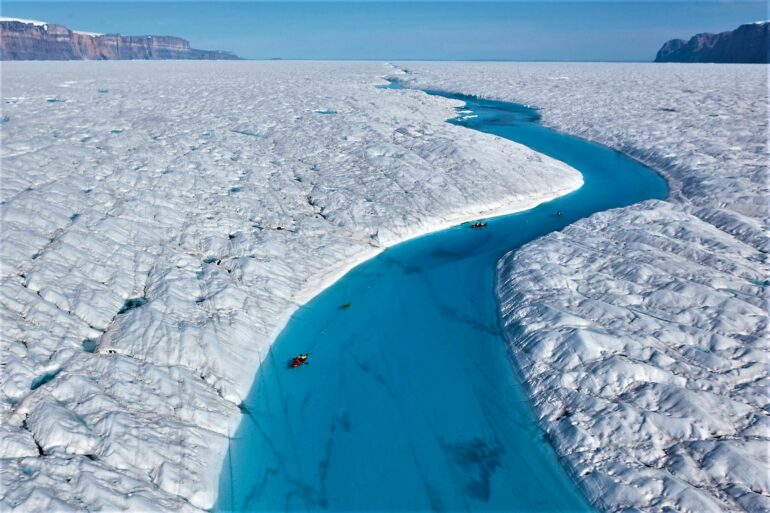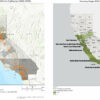I’m striding along the steep bank of a raging white-water torrent, and even though the canyon is only about the width of a highway, the river’s flow is greater than that of London’s Thames. The deafening roar and rumble of the cascading water is incredible – a humbling reminder of the raw power of nature.
As I round a corner, I am awestruck at a completely surreal sight: A gaping fissure has opened in the riverbed, and it is swallowing the water in a massive whirlpool, sending up huge spumes of spray. This might sound like a computer-generated scene from a blockbuster action movie – but it’s real.
Alun Hubbard discusses the mechanics of moulins and rappels into one in the second half of this introduction to the Greenland ice sheet.
A moulin is forming right in front of me on the Greenland ice sheet. Only this really shouldn’t be happening here – current scientific understanding doesn’t accommodate this reality.
As a glaciologist, I’ve spent 35 years investigating how meltwater affects the flow and stability of glaciers and ice sheets.
This gaping hole that’s opening up at the surface is merely the beginning of the meltwater’s journey through the guts of the ice sheet. As it funnels into moulins, it bores a complex network of tunnels through the ice sheet that extend many hundreds of meters down, all the way to the ice sheet bed.
When it reaches the bed, the meltwater decants into the ice sheet’s subglacial drainage system – much like an urban stormwater network, though one that is constantly evolving and backing up. It carries the meltwater to the ice margins and ultimately ends up in the ocean, with major consequences for the thermodynamics and flow of the overlying ice sheet.
Scenes like this and new research into the ice sheet’s mechanics are challenging traditional thinking about what happens inside and under ice sheets, where observations are extremely challenging yet have stark implications. They suggest that Earth’s remaining ice sheets in Greenland and Antarctica are far more vulnerable to climate warming than models predict, and that the ice sheets may be destabilizing from inside.
NASA’s GRACE satellites capture Greenland’s ice loss from 2002-2021.
This is a tragedy in the making for the half a billion people who populate vulnerable coastal regions, since the Greenland and Antarctic ice sheets are effectively giant frozen freshwater reservoirs locking up in excess of 65 meters (over 200 feet) of equivalent global sea level rise. Since the 1990s their mass loss has been accelerating, becoming both the primary contributor to and the wild card in future sea level rise.
How narrow cracks become gaping maws in ice
Moulins are near-vertical conduits that capture and funnel the meltwater runoff from the ice surface each summer. There are many thousands across Greenland, and they can grow to impressive sizes…



